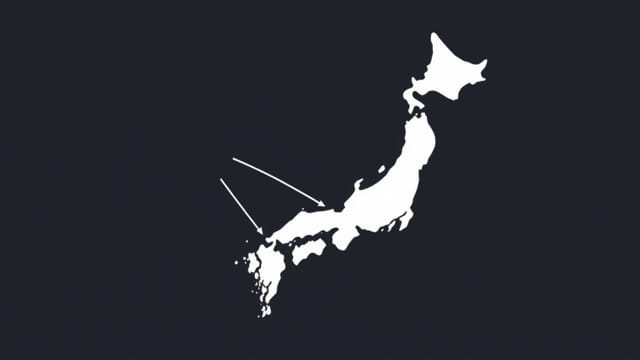When Did Japan Subjugate Korea
The question of when Japan subjugated Korea is deeply tied to a period of regional power shifts and imperial ambitions in East Asia. The process was not instantaneous but occurred over several years, involving political maneuvering, military presence, and ultimately formal annexation. Understanding this historical episode is crucial in grasping the complex history between Korea and Japan, the legacies of colonialism, and the rise of Japanese imperialism. The subjugation of Korea by Japan marked a turning point in the history of both nations and continues to influence their relationship today.
Early Japanese Interests in Korea
Japan’s interest in Korea dates back centuries, but it became strategically significant during the late 19th century. As Japan modernized during the Meiji Restoration, its leaders began to view Korea as essential to their security and economic interests. Korea, then under the rule of the Joseon Dynasty, was a relatively isolated kingdom but of strategic importance due to its location between Japan and China.
The Treaty of Ganghwa (1876)
The first major step toward Japanese involvement in Korea came in 1876 with the signing of the Treaty of Ganghwa. Japan used a display of naval power to pressure Korea into opening trade relations. The treaty declared Korea as an independent state, effectively loosening China’s long-standing suzerainty over the peninsula and increasing Japanese influence. This treaty marked the beginning of Japan’s formal push into Korean affairs.
Rising Tensions in East Asia
Throughout the late 19th century, Japan was not the only power interested in Korea. China and Russia also vied for influence. This competition led to two significant conflicts that shaped Korea’s fate.
First Sino-Japanese War (18941895)
The First Sino-Japanese War erupted over control of Korea in 1894. China, the traditional suzerain power over Korea, clashed with an increasingly assertive Japan. Japan emerged victorious, and the Treaty of Shimonoseki (1895) ended Chinese influence over Korea. This victory solidified Japan’s position in Korean affairs and marked the decline of Chinese dominance in the region.
Russo-Japanese War (19041905)
Following their victory over China, Japan had to contend with Russia, which had growing interests in Manchuria and Korea. The Russo-Japanese War began in 1904 and ended with another Japanese triumph. The Treaty of Portsmouth, brokered by U.S. President Theodore Roosevelt, recognized Japan’s paramount interest in Korea. From this point, Japan tightened its control over the Korean Peninsula.
Formal Subjugation: The Protectorate of 1905
In 1905, following its victory over Russia, Japan forced the Korean government to sign the Eulsa Treaty. This treaty, signed without the Korean Emperor’s consent, established Korea as a Japanese protectorate. It meant that Japan now controlled Korea’s foreign policy and military affairs. Although Korea retained a nominal monarch, real power had shifted to Japanese authorities.
Public and International Reactions
The Eulsa Treaty was widely condemned within Korea. Korean officials such as Minister Jo Byeong-se insisted the treaty was invalid, and patriotic movements began to emerge. Internationally, Japan faced little resistance, as major Western powers viewed its actions as part of the broader game of imperialism, and many supported Japan’s rise as a counterbalance to Russian expansion.
The Annexation of Korea in 1910
The full and formal subjugation of Korea occurred on August 22, 1910, with the signing of the Japan-Korea Annexation Treaty. This treaty, imposed under duress, dissolved the Korean Empire and turned Korea into a colony of Japan. The Japanese governor-general took full administrative control, and Korea ceased to exist as an independent nation.
Key Features of the Annexation
- All Korean government institutions were dissolved or restructured under Japanese control.
- The Korean Emperor Sunjong was stripped of power and reduced to a symbolic figure.
- Japanese law and education systems were implemented across the peninsula.
This marked the beginning of a harsh colonial regime that would last until the end of World War II in 1945.
Life Under Japanese Rule
During Japan’s rule from 1910 to 1945, Koreans were subjected to systemic oppression. The colonial government enforced strict censorship, suppressed Korean culture, and promoted assimilation into Japanese society. Land reforms and industrial policies often favored Japanese settlers and companies, displacing local Korean farmers.
Resistance Movements
Despite repression, many Koreans resisted. The most notable uprising was the March 1st Movement in 1919, which began as a peaceful demonstration but was violently suppressed by Japanese authorities. This movement inspired the formation of the Korean Provisional Government in exile and fueled the broader independence movement that lasted throughout the occupation.
The End of Subjugation
Japan’s occupation of Korea ended in 1945 with Japan’s surrender in World War II. Allied forces, particularly the United States and the Soviet Union, liberated the peninsula. However, Korea was divided at the 38th parallel, with the U.S. occupying the South and the Soviets the North, setting the stage for future conflict and the eventual Korean War.
Legacy of Japanese Colonization
The subjugation of Korea by Japan left deep scars on the Korean people. Issues such as forced labor, cultural erasure, and the use of Korean comfort women by the Japanese military continue to strain diplomatic relations. While Japan has made some official apologies, debates over compensation and historical memory remain contentious.
Modern Reflection
Today, the colonial period is a significant part of Korean national identity. Memorials, museums, and educational curriculums in South Korea emphasize the struggle for independence and the injustices of colonial rule. Understanding when and how Japan subjugated Korea helps contextualize ongoing discussions about nationalism, regional politics, and the pursuit of historical justice.
Japan subjugated Korea through a series of calculated steps that culminated in the formal annexation of 1910. This process began with treaties and wars in the late 19th century and ended with full colonial rule that lasted for 35 years. The effects of this subjugation continue to be felt today, influencing diplomatic relations, national identity, and historical discourse across East Asia. Learning about when Japan subjugated Korea is essential for anyone seeking to understand the broader implications of imperialism, resistance, and the enduring power of history.
